As the days lengthen and the first signs of
warmth, sun, and green grass creep into our lives, we’ve been
undertaking a super-exciting project: tapping the black walnut trees on
our property to make syrup. Although sugar maples are the tree of
choice for commercial sugaring due to their high ratio of sugar to water
in their sap, many other types of trees can be tapped to make syrup, including silver and red maples, hickory, birch, box elder, and walnuts.
Having tasted the delicious, light, and
refreshing sap of black walnut at our neighbor’s house last winter, we
were eager to tap our own trees this year, and to experiment with making
black walnut syrup.
First off, a few basics of tapping:
- Trees should be at least 14″ in diameter
- You will need: a drill, tapping spouts, buckets for collection, and a big pot in which to boil down the sap
- Ideal tapping conditions are a combination of cold nights and warmer days. For maple trees, daytime temperatures should be in the 40′s; our black walnuts have been flowing this week in daytime temperatures of 50-60 degrees.
Here’s how it’s done:
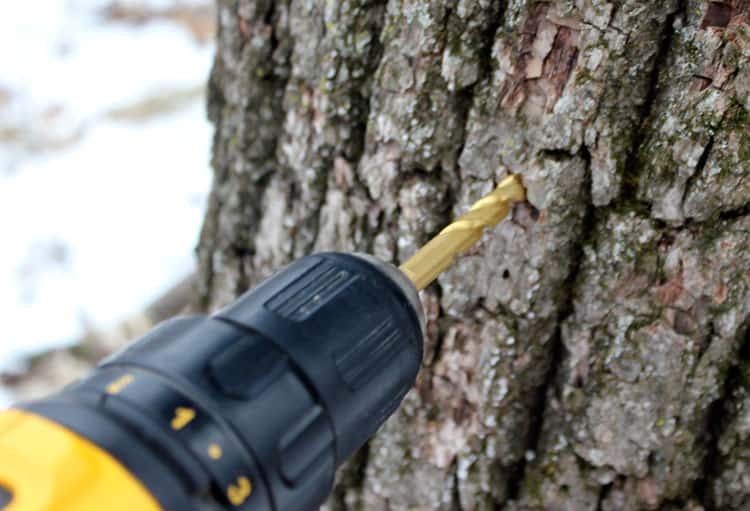
First, we used a 5/16th drill bit to create a small hole for the spout.
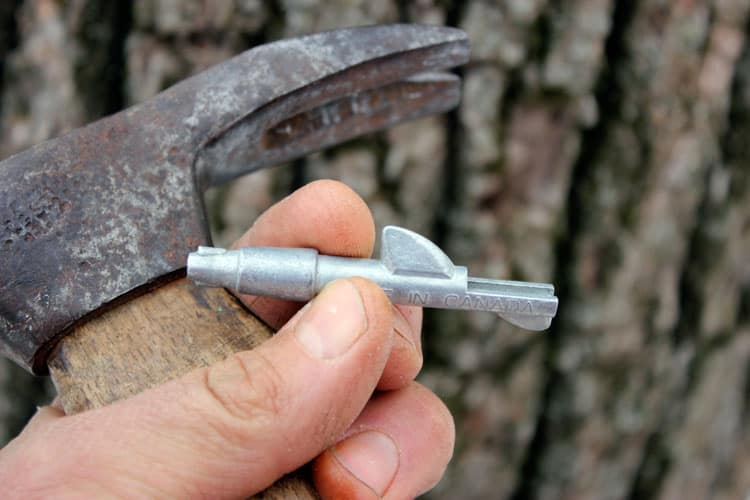
Gently hammer in the spout (we used this one from Leader Evaporator).
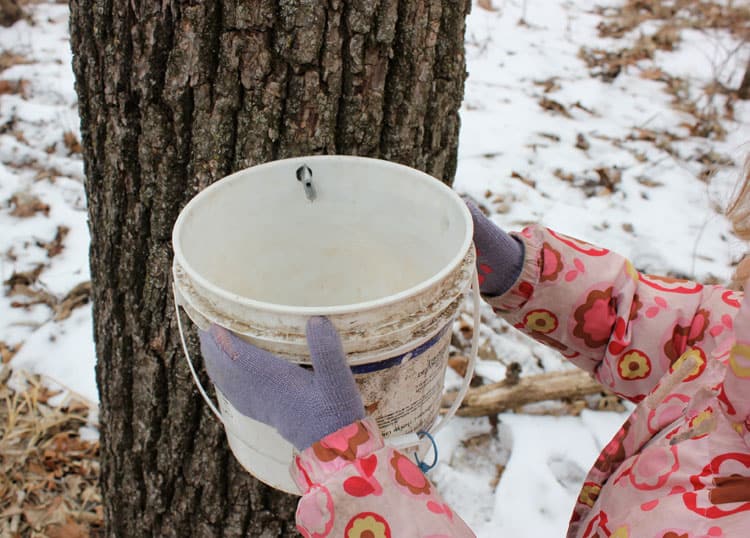
Brian drilled holes in food-grade buckets to collect the sap.
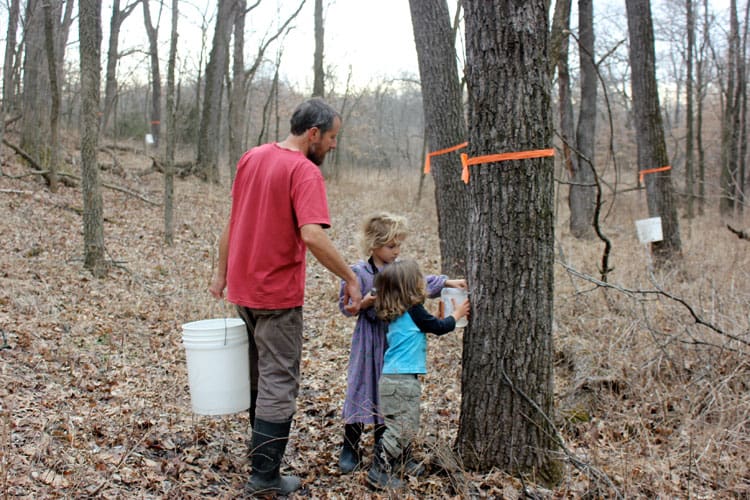
We tapped 14 trees in total around the property, creating a sort of “sap line” that we walk each day. That, in and of itself, is such a satisfying process, noticing the trees in our woods, hearing bird calls, walking together as a family, as the kids get to help collect and pour the sap.
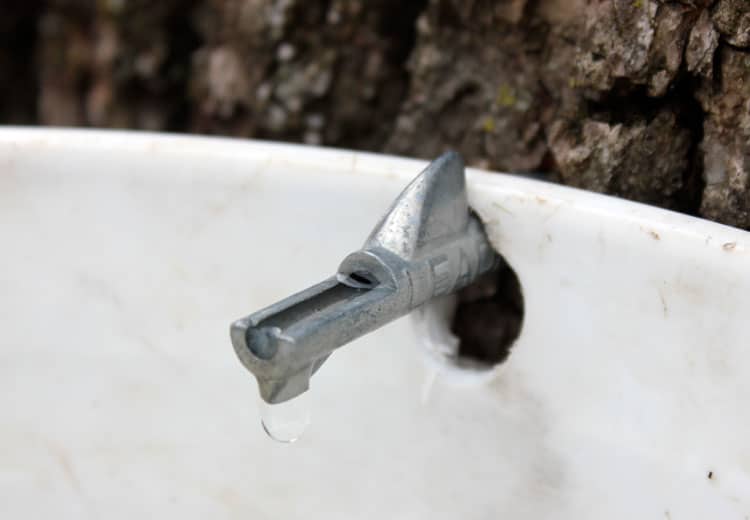
Drip. drip. drip.
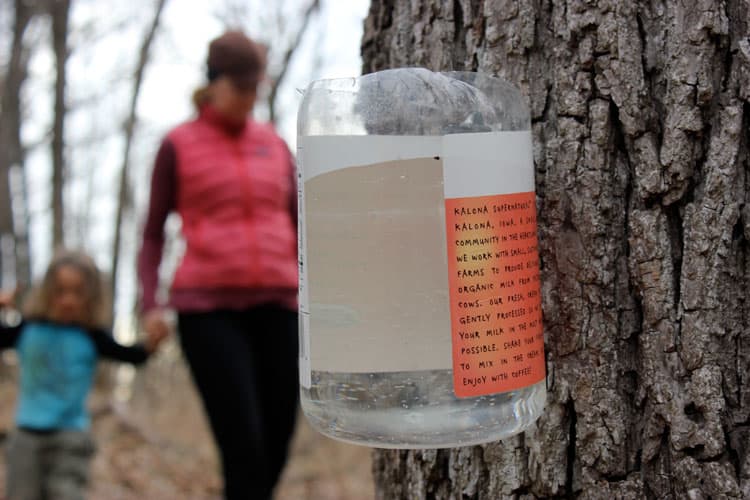
Almost full to the top!

We pour each sap bucket into this larger 5 gallon food-grade bucket to bring it back home.

The sap itself is full of nutrients, cold, with just a hint of sweetness. It is refreshingly light with a slight nutty flavor, and we will sometimes just drink it as is!
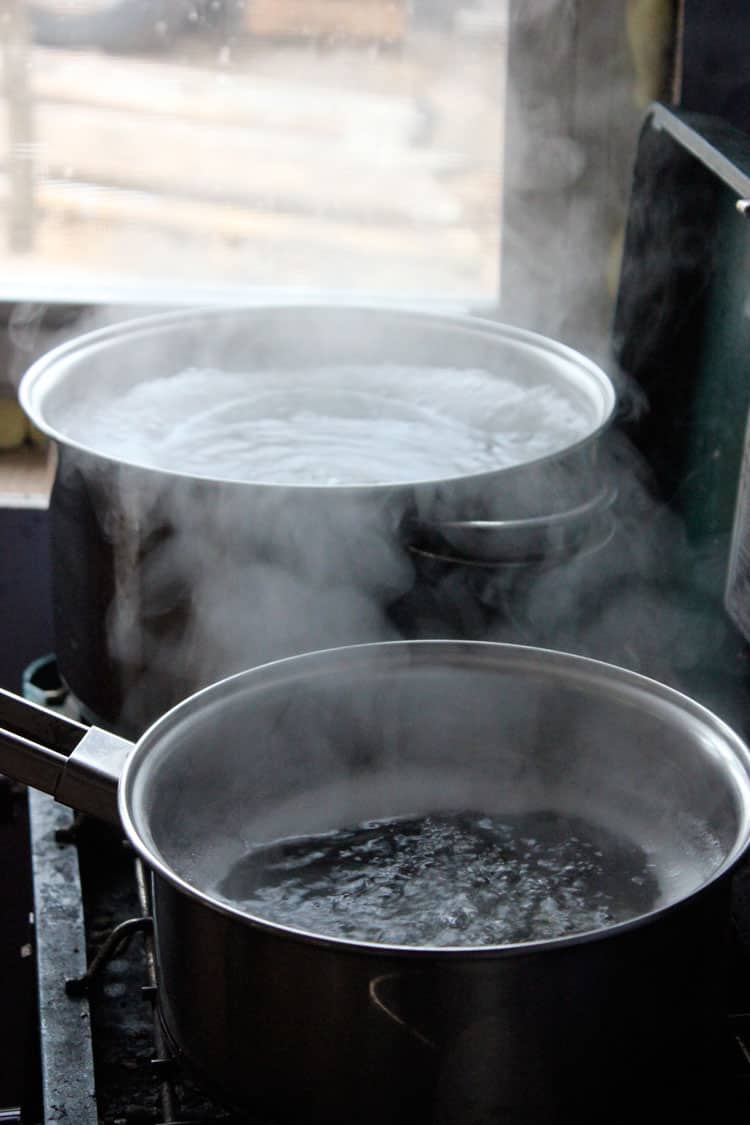
Next, we boil the sap either on the stove top, or on our campfire ring. This was about 9 quarts of sap, which boiled down to…

About 12 ounces of sweet black walnut syrup!
At first taste, black walnut syrup is intensely sweet, but has a certain nuttiness to it. I enjoyed the flavor quite a bit, especially on top of French toast! I would estimate that it took about 3 hours of continuous boiling to achieve the color and sweetness that we desired, and I would highly recommend boiling the sap out of doors, as it produced copious amounts of steam!



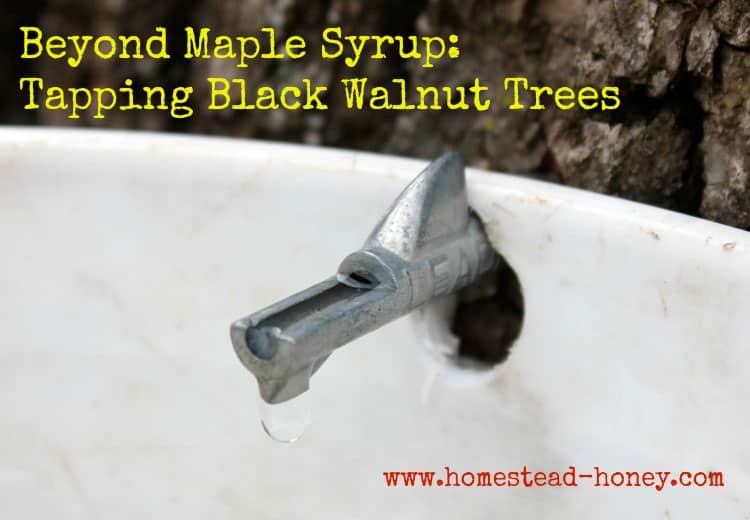


0 comments:
Post a Comment